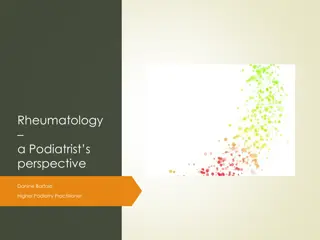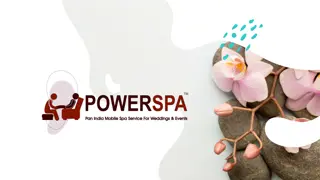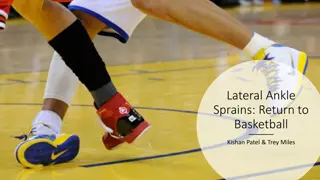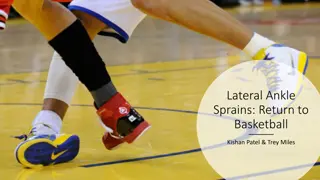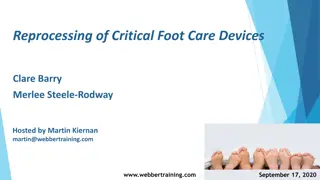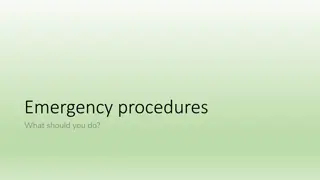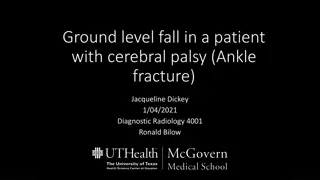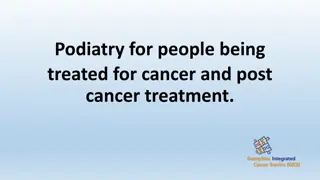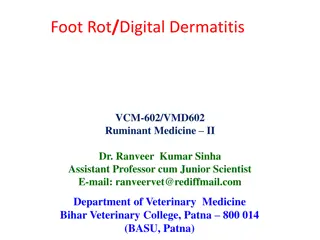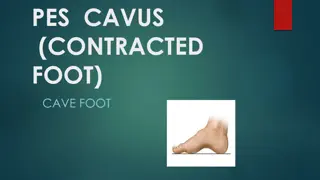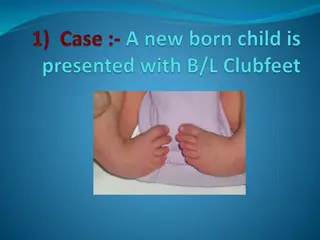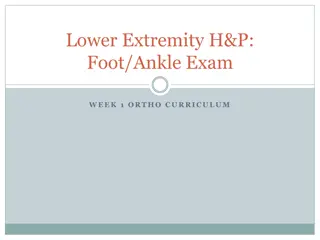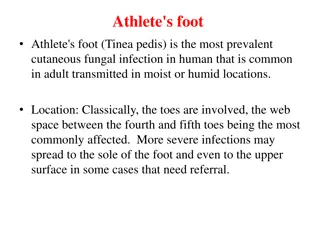Comprehensive Podiatric Care for Foot and Ankle Health
Offering specialized care for foot and ankle conditions including bunions, hammertoes, fungal toenails, and diabetes-related issues. Providing insights on hygiene, treatments, and preventive measures. Learn about the qualifications and services of a dedicated foot and ankle specialist.
Download Presentation

Please find below an Image/Link to download the presentation.
The content on the website is provided AS IS for your information and personal use only. It may not be sold, licensed, or shared on other websites without obtaining consent from the author.If you encounter any issues during the download, it is possible that the publisher has removed the file from their server.
You are allowed to download the files provided on this website for personal or commercial use, subject to the condition that they are used lawfully. All files are the property of their respective owners.
The content on the website is provided AS IS for your information and personal use only. It may not be sold, licensed, or shared on other websites without obtaining consent from the author.
E N D
Presentation Transcript
Insert your logo here Insert your information here
Doctor specializing in only foot and ankle. Skin and nails Bones Nerves Fractures Sports medicine Surgery Tendons Biomechanics Kids, Adults, Seniors
4 years pre-medical undergraduate degree MCAT testing 4 years of postgraduate podiatric medical school 3 years of hospital-based residency Fellowship optional State licensing exam
Hygiene Wash and dry between toes daily. Trim nails straight across. Nail brush to remove debris under nails. NEVER STICK ANYTHING INTO NAIL EDGES TO CLEAN THEM. Moisturize skin daily to keep skin supple.
Bunions Hammertoes Fungal Toenails Diabetes
What is it? Bony bump on the inside of the great toe joint. Causes Deviation of the 1st metatarsal and the great toe. Symptoms Pain from shoes rubbing, because of trouble with fit. Pain at the big toe joint. Picture of bunion
Treatment Depends on person Activity level Age Health Surgical Different types of procedures ranging from WB in post-op shoe to needing crutches with no weight. Orthotics Correct mechanics Shoe gear Correct mechanics Accommodate bump. Xray of bunion
Medical device that fits into shoes. Biomechanical control for an unstable foot type. Different types and styles. Custom offers variety of materials and options. Picture of orthotic
Picture of hammertoe What is it? Buckling of the toe. Demographics All ethnicities. Causes Stabilization by long tendons in toes may lead to buckling. Symptoms Pain or callus at tops of toes from rubbing against shoes. Pain or callus on bottom of ball of foot.
Treatment Depends on person. Surgical Removing the knuckle to straighten toe. With or without pin. Non-surgical Soft upper to stretch shoes. Extra depth shoes with deep toe box. Crest pad Picture of crest pad Picture of post-op
Pre-op and post op pictures
What is it? Infection of the toenail. Demographics All ethnicities. Symptoms Thickening of toenail. Changes in shape, ingrown. Picture of fungal nails
Treatment Depends on person. Medication Tablet: cleaned by liver Need to check liver function tests. Palliative care Keeping nails thin. Cut straight across. Picture of fungal nail
What is it? Abnormal usage of glucose in the body. Excess glucose affects the blood vessels, nerves, and immune system. Demographics All ethnicities. What does this mean in the foot? Deceased blood flow Altered or loss of sensation in feet. Changes in skin integrity. Atrophy of musculature in foot. Increased risk of infections.
So what? Greater risk for foot ulcers. Change in foot architecture and decreased skin integrity Skin isn t as good as handling stress. Lack of sensation Can t feel pressure or pain as well to stop activity. Decreased blood flow. Unable to heal as quickly when injured. Increased demand to area may cause more tissue to die.
As it appears in the foot Greater risk for foot ulcers (cont) Altered immunity. Not able to fight off infection as well. May infect bone. May cause infection in blood. If infection not controlled, could lead to death. Greater risk for death Infection can increase blood sugar, which can be lethal if not treated. Also in conjunction with heart disease.
Treatment of foot issues #1 CONTROL BLOOD SUGARS Prevention Look at your feet everyday. Always wear shoes. Do not place feet in extremes of temp. Seek treatment if you have an injury or cut. Anything red, hot, or swollen, get off your foot, and see your podiatrist.
Podiatric Prevention Be seen yearly for foot evaluation. Protective threshold testing. Vascular evaluation. Evaluate shoe gear. Work with your doctors, inform them if anything seems wrong.
Wide toe box. Toes should be able to move side-to-side and top-to-bottom. Protect toes. Alternate shoes each day. Pictures of good shoes
Do you know a student interested in a career in healthcare? Encourage them to check out careers in podiatric medicine by visiting www.DiscoverPodiatricMedicine.org. We offer opportunities to shadow a DPM, learn what the pre-requisites are for a college of podiatric medicine, more about the MCAT test, and how to apply.



